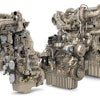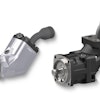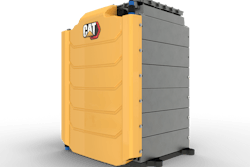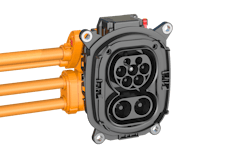
Smart electronics is growing in the consumer sector because of the advanced printed circuit board (PCB) fabrication process using flexible substrates and high-quality printing technologies. Wearable electronics are a wide range of electronic devices designed to be mounted on the body. These include smart watches, medical implants, fitness trackers, smart jewelry, smart eyewear and augmented reality (AR) accessories.
Wearables can be a simple Internet of Things (IoT) sensor used for transmitting the patient’s data or a complex virtual reality (VR) headset synced with a laptop. Wearables use smart sensors to aggregate and monitor real-time data.
The potential for wearable technology is enormous as innovative manufacturing methods are adopted to bridge the performance differences between flexible electronics and standard rigid circuit boards. Unconventional PCB materials, printing technologies and additive manufacturing processes are impacting the wearable electronics industry. The merits of stretchable substrates and low-cost functional ink print techniques have made wearable electronics manufacturing quite easy and profitable.
Challenges
Industry experts are exploring different printable ink formulations, functional materials and flexible energy storage devices to fulfill the surging demands of wearable electronics. A few challenges are associated with printed flexible PCB manufacturing. The technology gaps that flexible hybrid electronics had are successfully addressed using the latest printing techniques and engineering processes, such as:
- While printing the flexible circuits, the trace conductivity can be lower compared to traditional manufacturing processes, limiting the design for low-speed applications. To overcome this issue, using a laser sintering process can improve trace conductivity.
- Connecting the external power sources to a printed flexible circuit will be difficult because the conventional connection methods may not be feasible in the case of polymer substrates due to their low melting points. Micro joining techniques can help connect external power without damaging sensitive components on the flexible PCBs.
- To produce high-resolution printing for wearable applications, smaller and continuous traces are required. Earlier printing methods provided low conductivity and flexible traces. However, the recent 3D printing technique supports the printing of small traces with higher conductivity.
- Drilling fine, through-hole vias in a flexible substrate may be difficult. To maintain the performance and durability of wearable devices, new conductors are designed that can stretch with the flexible substrate and maintain conductivity.
Benefits
With the advancements in printing technologies and progress in material research, the benefits of printed flexible electronics are many. They offer products in smaller, lighter and diverse form factors compared to the traditional circuit boards. The low cost and ease of integration and production using printed electronics drive the quality manufacturing of wearable electronics.
Printing techniques like flexography, screen printing and roll-to-roll printing can continuously process designs on flexible substrates. Hybrid nanocomposite material-based inks are suitable for fabricating multilayer, thick films ideal for smart packaging. With inkjet printing, the printing nozzle movement is programmed for noncontact patterning on different substrates. It provides advantages like better biocompatibility, large-scale patterning and high production yield desired when manufacturing flexible, wearable devices.
Printed flexible electronics are successfully included in sensors, displays and energy storage devices. The cost-effective printing techniques on flexible substrates assist manufacturers in developing different types of sensors — such as biosensors, pressure sensors, and gas and temperature sensors. They can be used in healthcare and industrial applications.
Displays based on organic, light emitting diodes are compatible with inkjet printing and are suitable for flexible applications. They provide a fast response time, broad field of vision and good power efficiency. Thin film transistors are the fundamental electronic units used in the integration of flexible and wearable devices. These inkjet-printed transistors are mechanically flexible and deliver consistent electrical performance.
Portable power supply units are key in wearable electronics. They need to be safe and lightweight. Flexible energy storage devices like lithium-ion batteries and supercapacitors are best suited for this application. Printing techniques support flexible covering layers for energy storage parts like electrodes, current collectors, etc. This improves fabrication efficiency which is significant in energy storage devices. Wearable devices can use printed supercapacitors that have good bending tolerance, long-term stability and excellent power density. Using appropriate ink materials, stretchable substrates and printing methods, implementing innovative features in wearable applications is possible.
Applications
Wearable electronics are not limited to smart watches or fitness trackers. New technologies like artificial intelligence (AI) and the IoT are pushing wearables into industries like entertainment, healthcare, fashion and professional sports.
- Electronic skin patches are the next-gen wearables that are using embedded biosensors to capture and store human vitals. They are simple to wear and easily disposable after use. Monitoring chronic illnesses such as diabetes or high cholesterol using tiny sensors can avert serious health conditions. These powerful wearables can set new benchmarks and transform health-care services.
- Smart glasses and VR headsets are some of the popular wearables in the entertainment and gaming sectors. AR accessories integrate digital data with the real world which can be used for gaming or virtual traveling.
- Intelligent fashion is the upcoming application of wearable electronics. Clothes and accessories like jewelry and shoes are embedded with sensors and electrical fibers. They can empower the user to take phone calls or play music instantly.
- Wearable athletic devices are built into sports equipment and relay data to the coach for a player’s performance evaluation. Also, the smart clothes of players can monitor their health parameters during training sessions.
Conclusion
The growing popularity of wearable electronics is backed by innovative printing techniques and flexible materials. To extend the battery life of wearables, piezoelectric energy harvesters are used that convert body vibration into electric energy. PCB manufacturers can help in overcoming those PCB fabrication issues with their domain expertise and production processes.
The endless possibilities of printed electronics are capitalizing on flexible PCBs. They are bringing innovation to the wearable technology world. The future of the wearable industry is aligned with revolutionary products like these:
- AR-based smart glasses
- AI for the human brain
- Intelligent prosthetics
- Industrial exoskeletons
Suresh Patel is senior sales engineer at Mer-Mar Electronics.



















